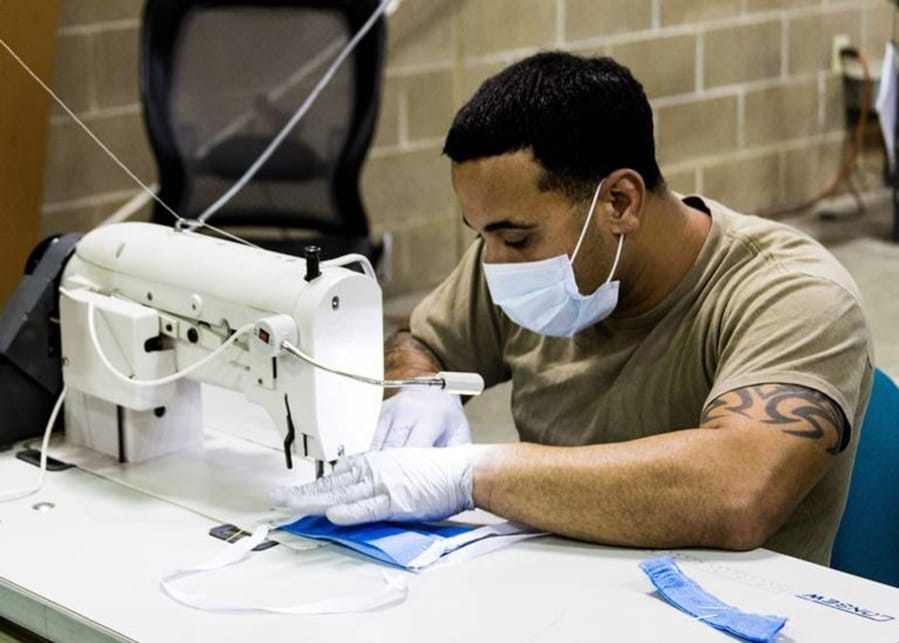WASHINGTON — Soldiers who usually mend parachutes and rigging are turning those skills to sewing much-needed coronavirus surgical masks.
Parachute riggers at Joint Base Lewis-McChord recently used their sewing machines to produce more than 1,000 surgical masks, said Master Sgt. Taylor Cathey, a senior airdrop operations noncommissioned officer with the 1st Special Forces Group (Airborne) at the military base.
“Every parachute rigger that comes into the Army in our advanced individual training does receive training on sewing and maintenance procedures,” said Cathey, who is leading a team of about 15 soldiers to sew the surgical masks. “So it’s kind of like riding a bike. Once you get back behind it, it’s a little wobbly at first, but once you get into it, it’s pretty simple.”
The unit got a face mask pattern from the Centers for Disease Control and Prevention and blue surgical wrap from Madigan Army Medical Center, which is located on base, Cathey said. They are using half-inch-wide strips of cotton cloth to sew the straps.
“It’s still the basic stitch, straight line stitch that we use,” Cathey said. “Most of the techniques we’ve developed from sewing on parachutes definitely transfers to sewing the masks. It actually makes sewing the masks a little bit easier.”
The first batch of masks were then delivered back to Madigan’s emergency room, said spokesman Jay Ebbeson.
The blue surgical masks are often for one-time use, “and we do go through them,” Ebbeson said. “Getting them from the riggers will help us maintain our supply.”
Using the skills for fixing parachutes to produce the much needed masks has been meaningful, Cathey said.
“It’s been a great opportunity not only for my parachute riggers but also special forces to give back to our community, and to be in the fight against COVID,” she said.
Another unit on the Washington military base has begun to produce mask shields, which have been in short supply around the country due to the COVID-19 outbreak.
The 17th Field Artillery Brigade’s maintainers at Lewis-McChord normally use their four 3D printers to make spare parts for vehicles. Using the four 3D printers and the new process, the base will be able to create between 16 to 20 fully assembled, sanitized face shields a day, said Chief Warrant Officer 3 Richmond Minton, a logistics officer for I Corps at Lewis-McChord.
They worked out a simplified process to allow Army bases all over the world to use the supplies and machinery they have on hand to create FDA-approved face shields.
“If a guy has a 3D printer, and he’s in Afghanistan,” he can use the plans from Lewis-McChord, make the face band, then go into the command post on the forward operating base and get acetate sheeting and assemble an FDA-approved face shield, Minton said.
By creating an Army-wide, FDA-approved process, it allows each base to generate its own approved face shields, which could reduce demand from the military on the national stockpile, freeing those up for civilian hospitals, Minton said.




